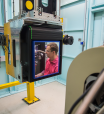

Showing 401 - 420 of 752 results


Australian Synchrotron FAQs
Frequently asked questions about beamtime, accommodation and the user portal.

The impact of boron on glass surface properties
Within the bulk structure of such glasses, boron is known to be a key actor, as it exhibits intriguing and composition-dependent changes in coordination state that often drive properties.

Innovate Reconciliation Action Plan
In 2023 ANSTO produced its 2nd Innovate Reconciliation Action Plan to guide reconciliation actions.
ANSTO and startup contributing to Australian space research and development
ANSTO has an association with Ouranos Systems, a company that is developing robust nuclear-based power solutions for satellites and space vehicles.

How nuclear energy generation could support clean hydrogen production
Nuclear-based energy generation systems not only provide comparatively low-cost, low-carbon emission electricity but also provide substantial amounts of process heat.

Eureka Prizes 2024
New partnership
Australia and Sri Lanks signs new partnership to fight chronic kidney disease.
The power of deuteration brings insight for mRNA-based drug delivery and vaccines
The National Deuteration Facility is providing deuterated cholesterol, an essential ingredient in lipid nanoparticles for the delivery of vaccines using mRNA, to academic and industry partners.

What are radioisotopes?
Radioisotopes are widely used in medicine, industry, and scientific research. New applications for radioisotopes are constantly being developed.

Technical information - Kookaburra
Specifications, Instrument layout, and Instrument reference
Certificate of appreciation from WA DFES
ANSTO and the Australian Radiation Protection and Nuclear Safety Agency (ARPANSA) have been recognised for their valuable contributions to the search and recovery efforts for a missing 8mm-long radioactive capsule in the Western Australian outback.

High Performance Macromolecular Crystallography Beamline (MX3)
The High Performance Macromolecular Crystallography beamline will enable the study of very small (sub-5 micrometre) or weakly diffracting crystals, providing a state-of-the-art high-throughput facility for researchers. MX3 will be able to study the structures of large proteins and protein complexes for virology, drug design and industrial applications via goniometer mounted crystals, in-tray screening, or via serial crystallography methods.

Services - Echidna
Sample environments, Data Analysis, Mail-in Services.

Space
ANSTO has a range of capabilities and expertise to support aerospace and space research.
Sutherland Shire locals invited to become ANSTO Citizen Scientists
Improving carbon dating
Study helps make carbon dating a more accurate chronological tool.
Acute Myeloid Leukemia
New therapy targets aggressive form of leukaemia
Today we celebrate 65 years since the official opening of Australia’s first nuclear research reactor in 1958
ANSTO is celebrating the official opening of HIFAR, Australia’s first nuclear reactor, sixty-five years ago.